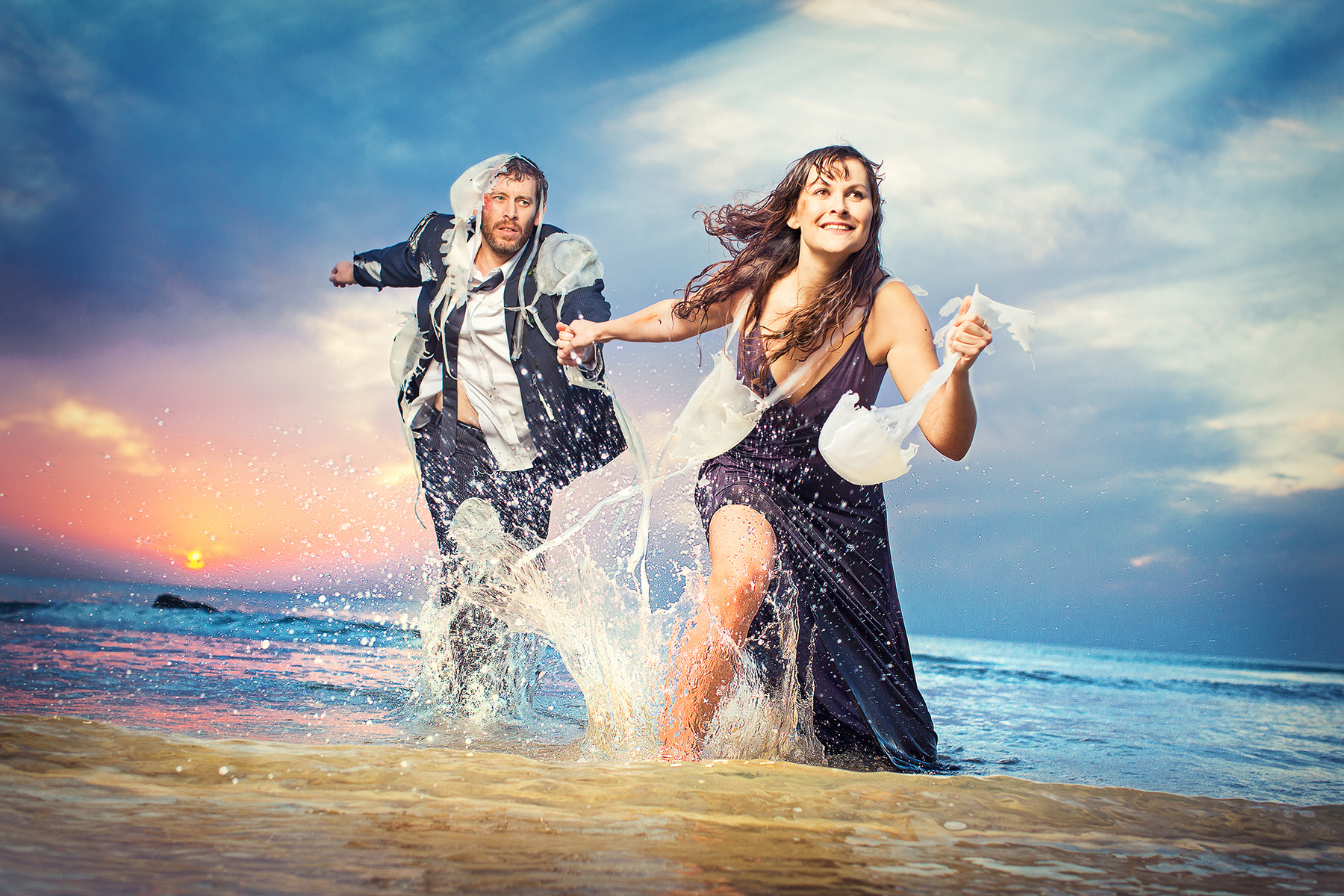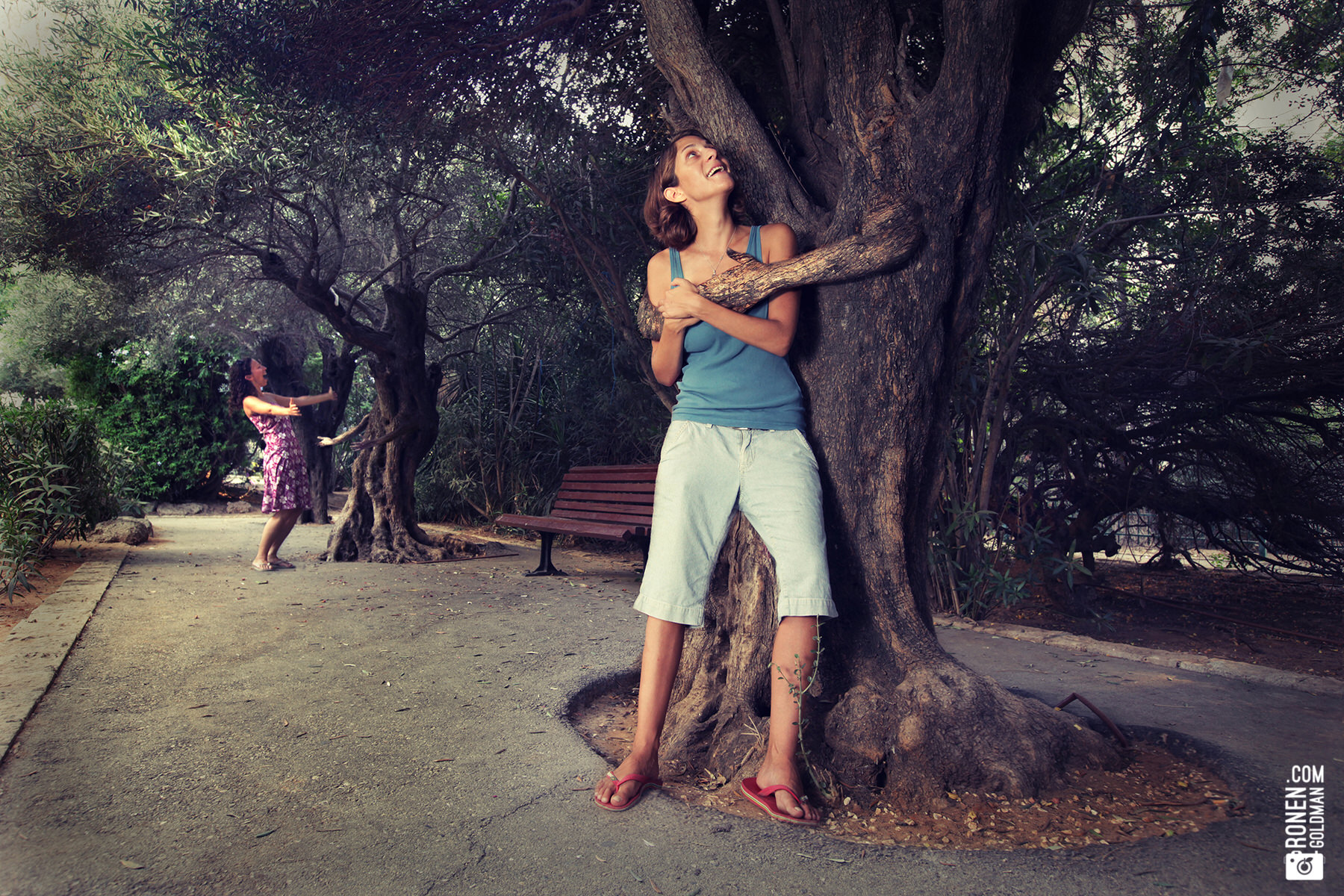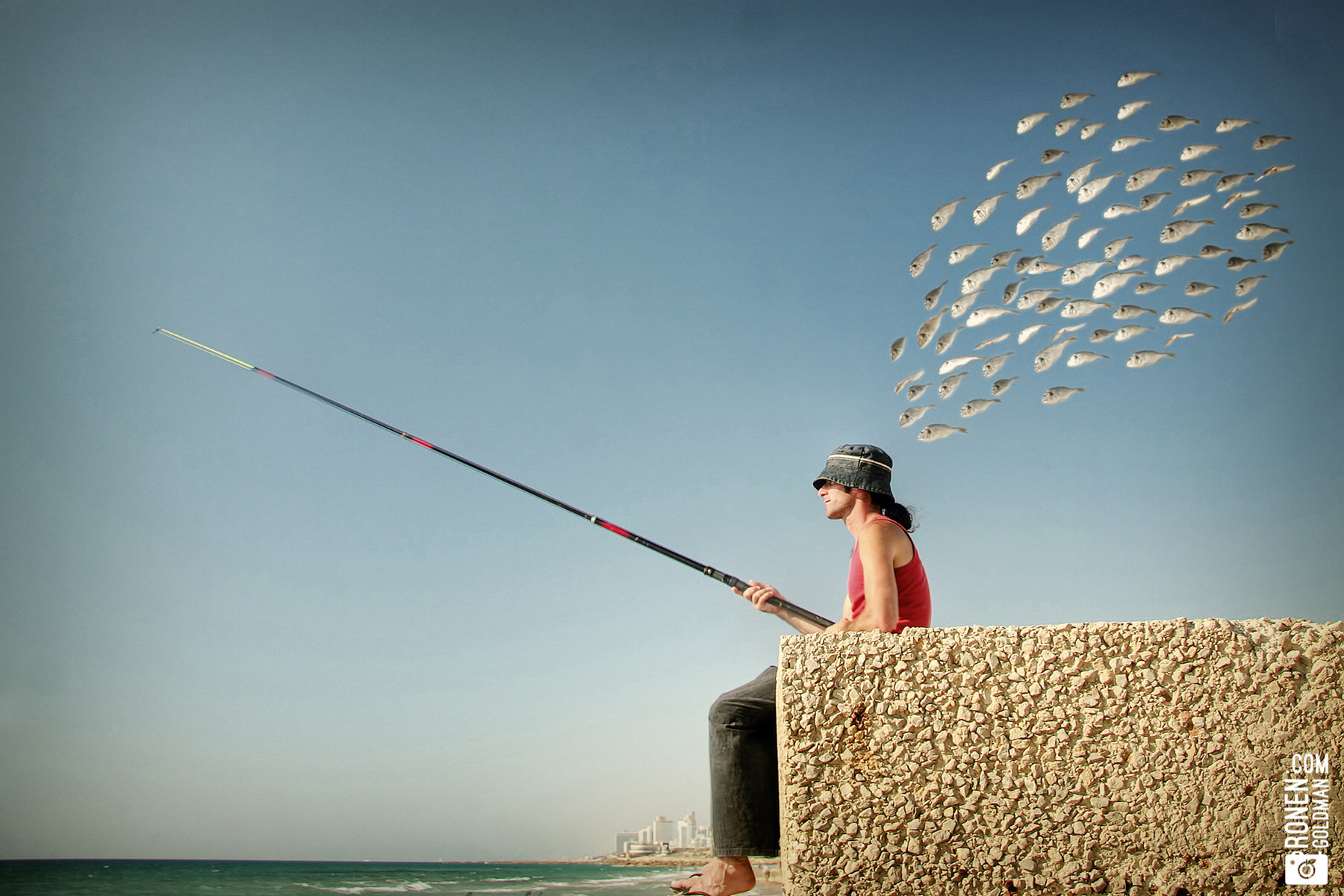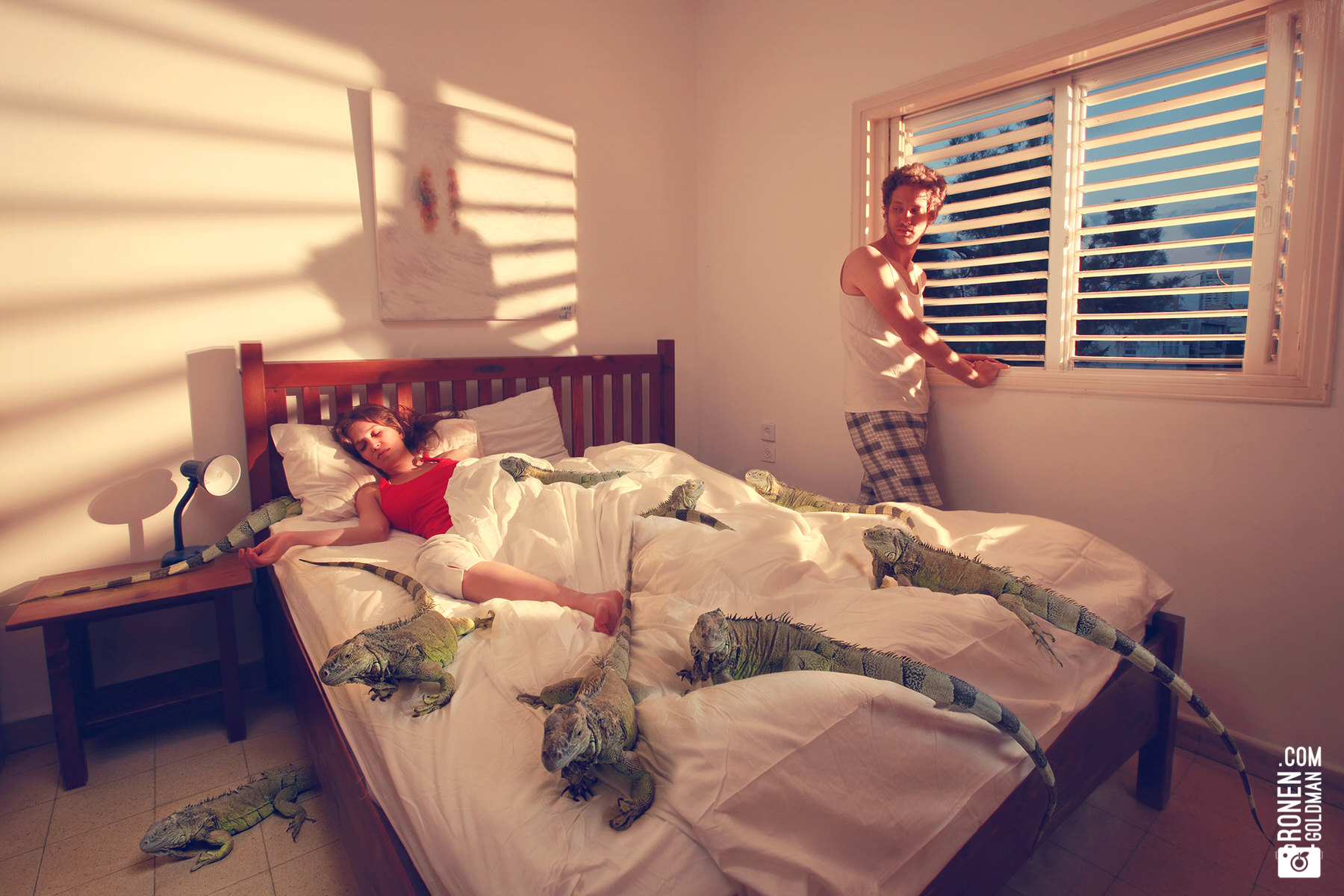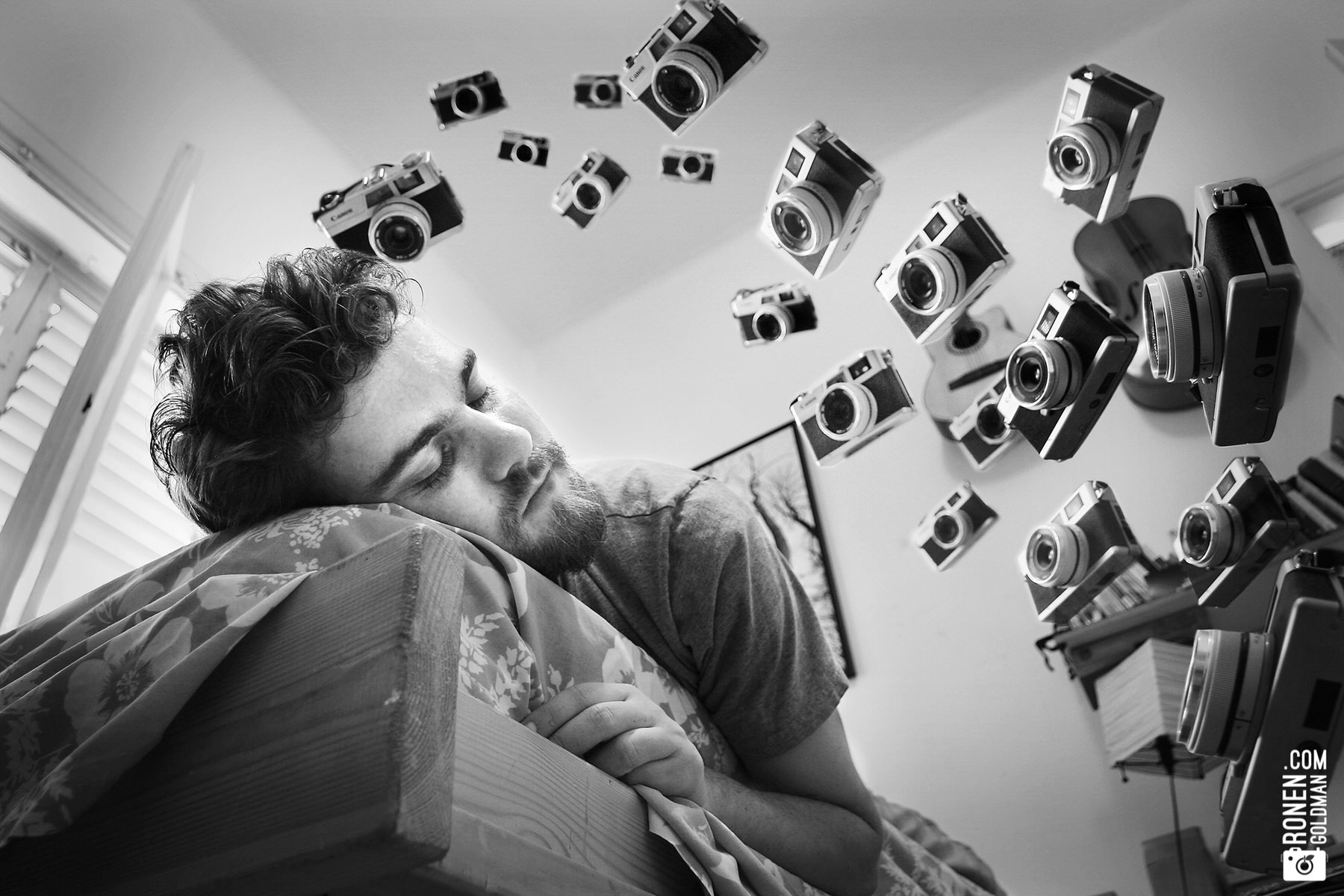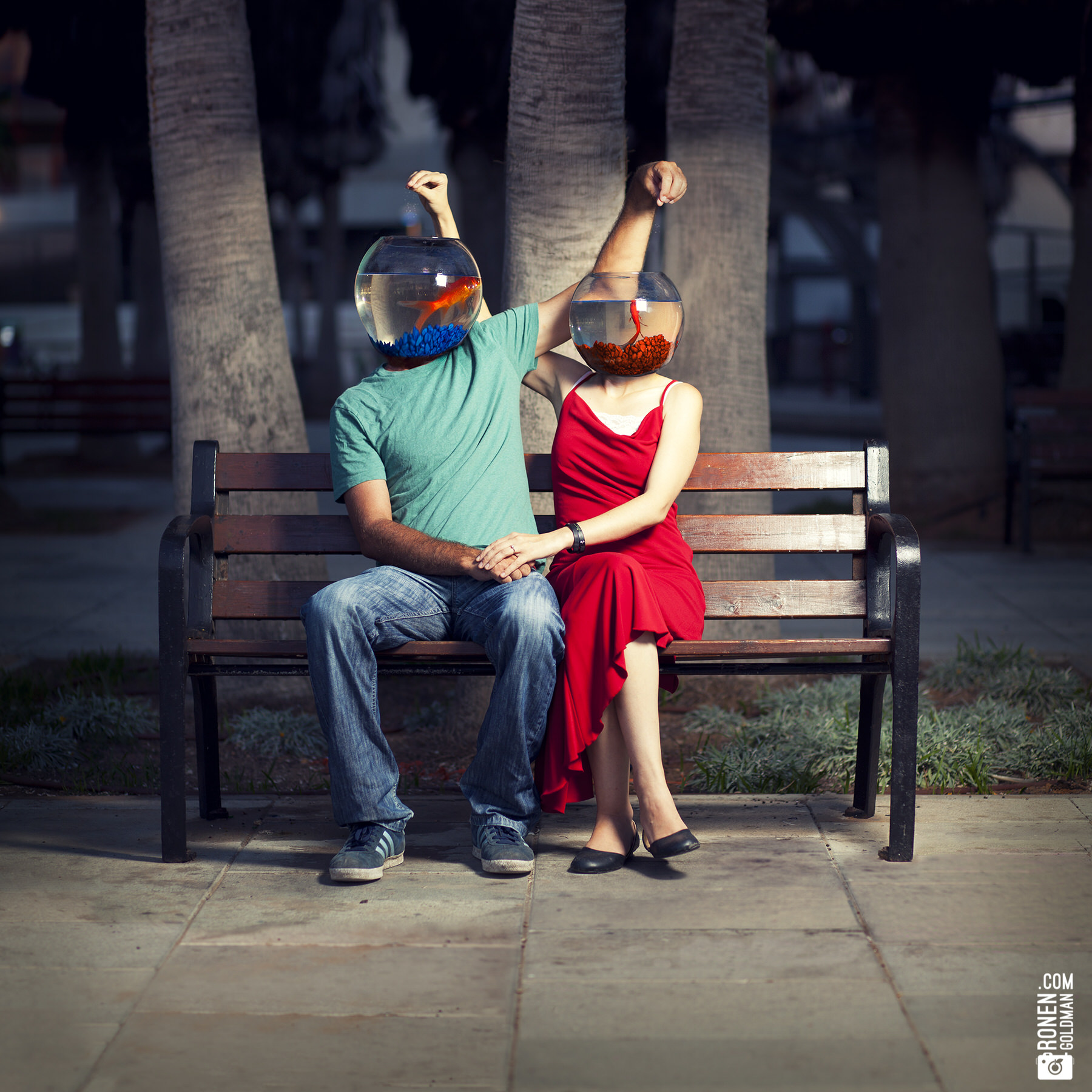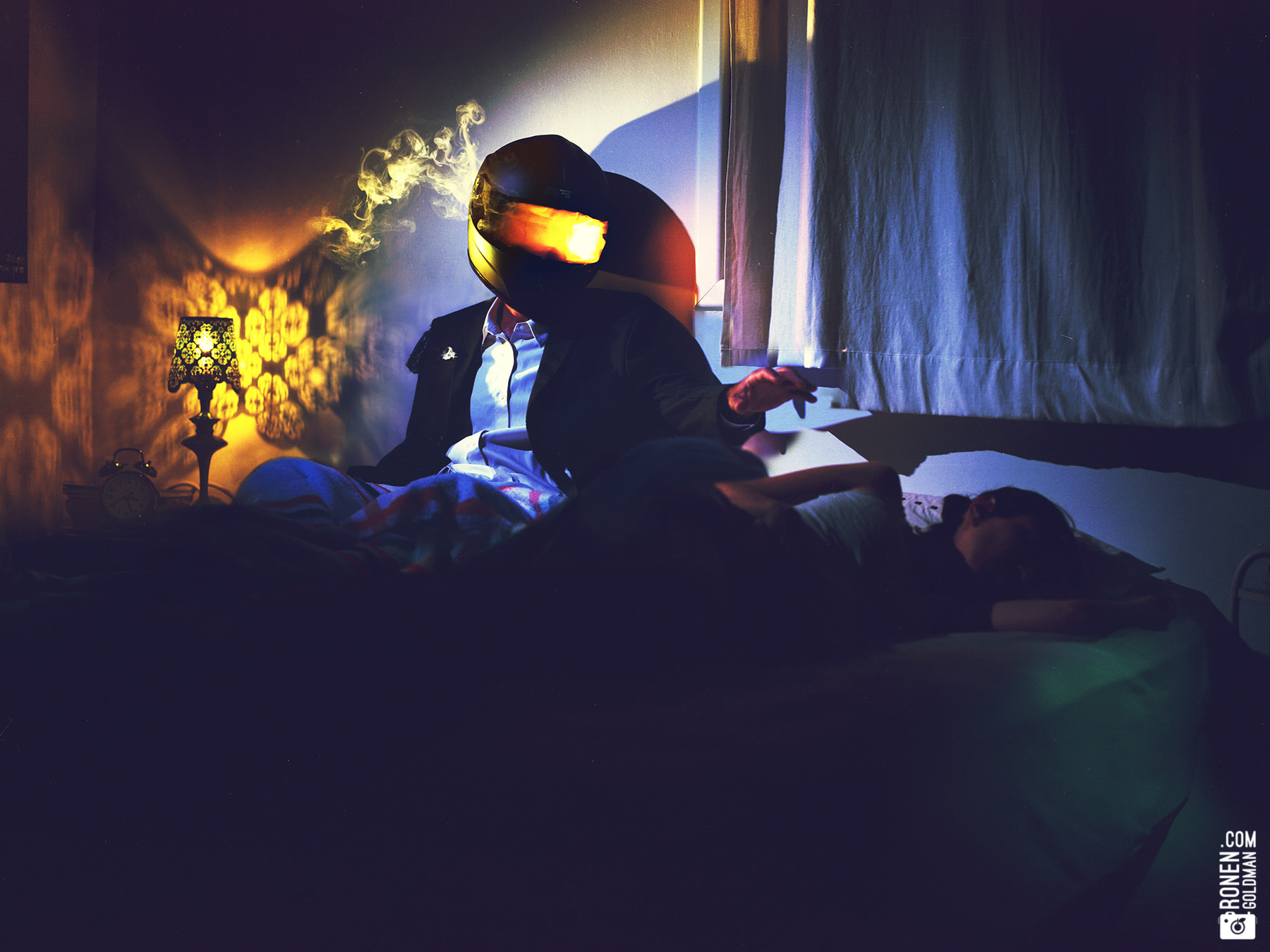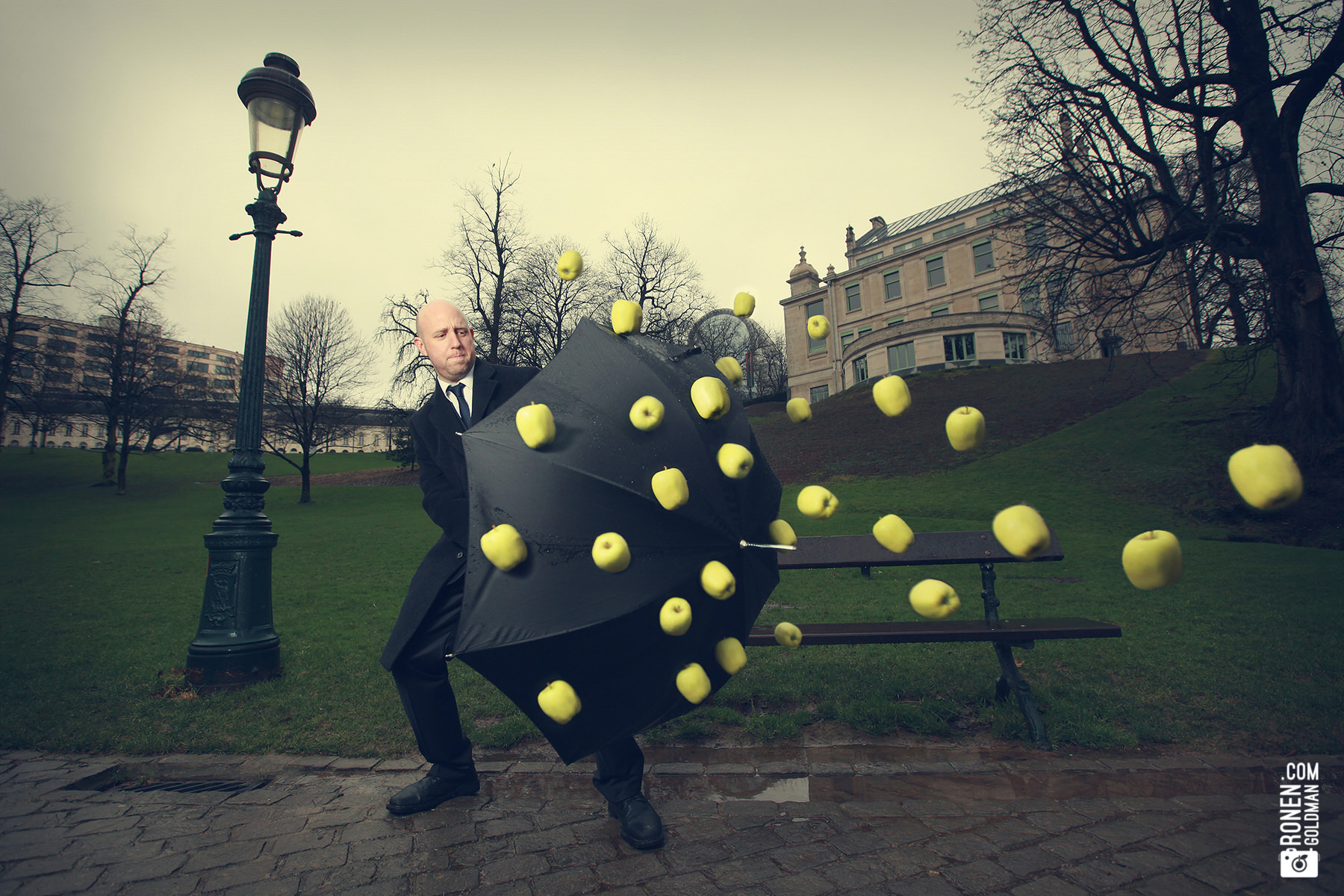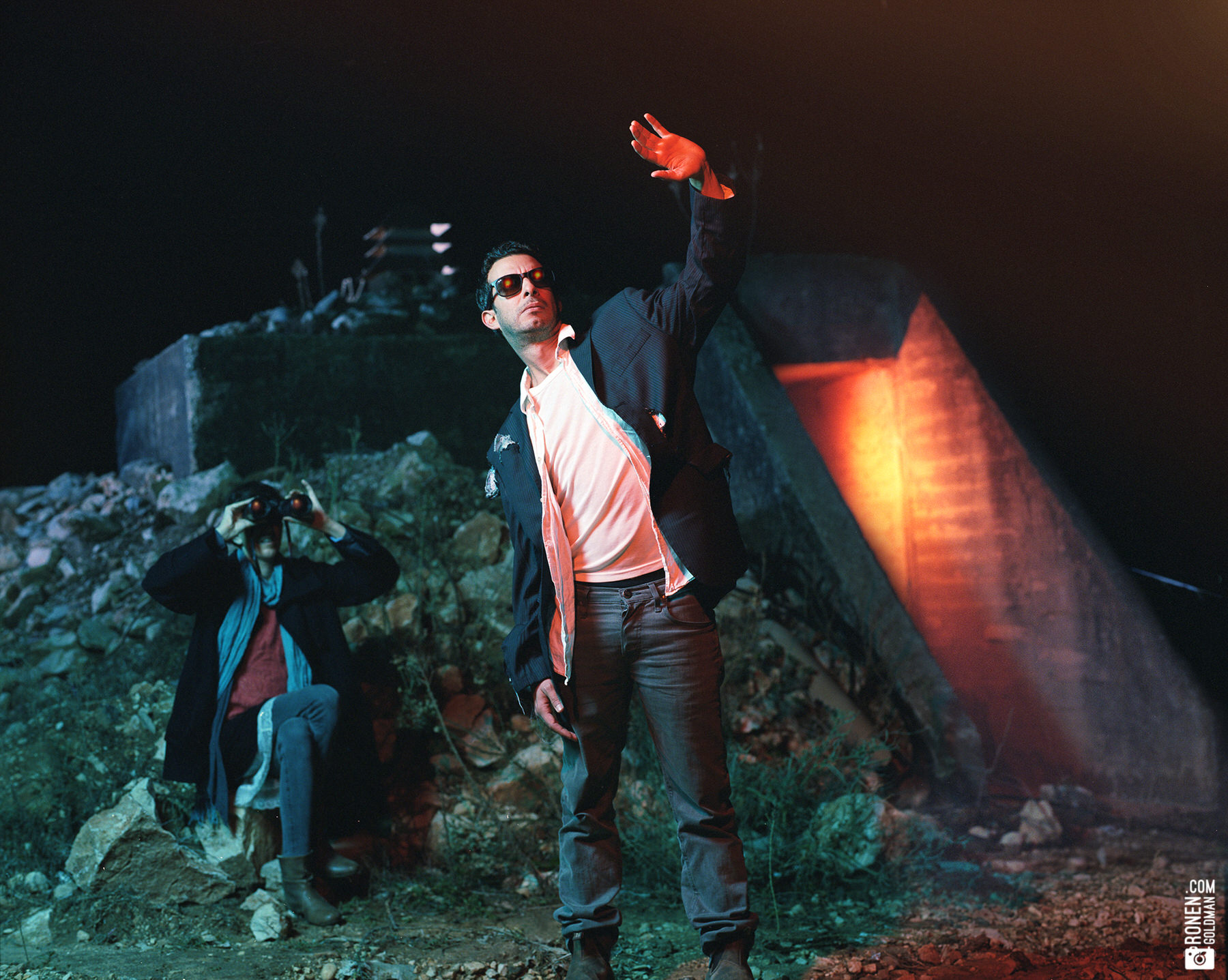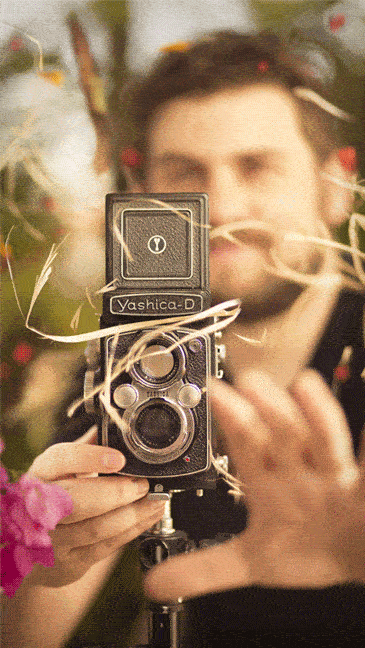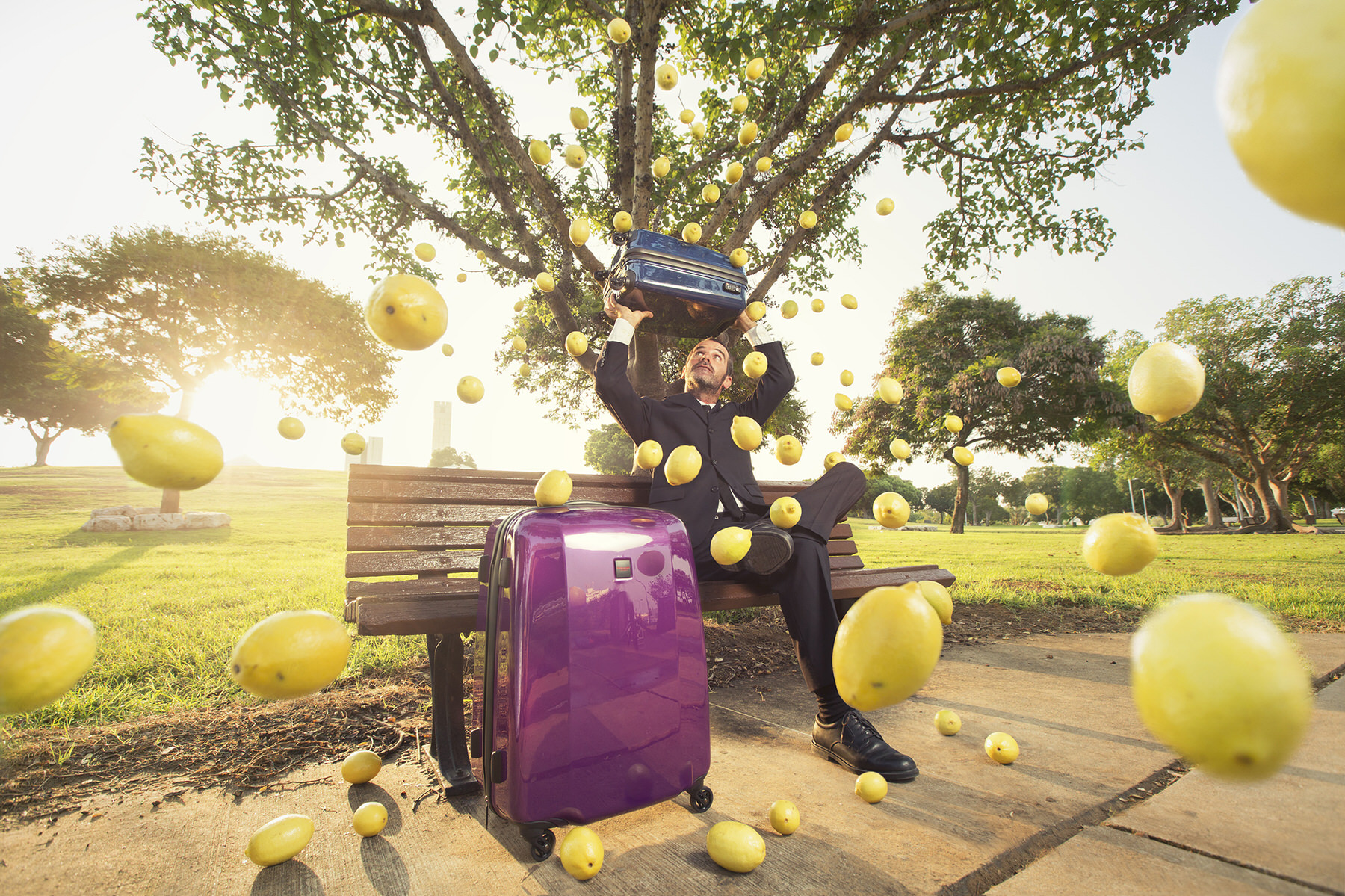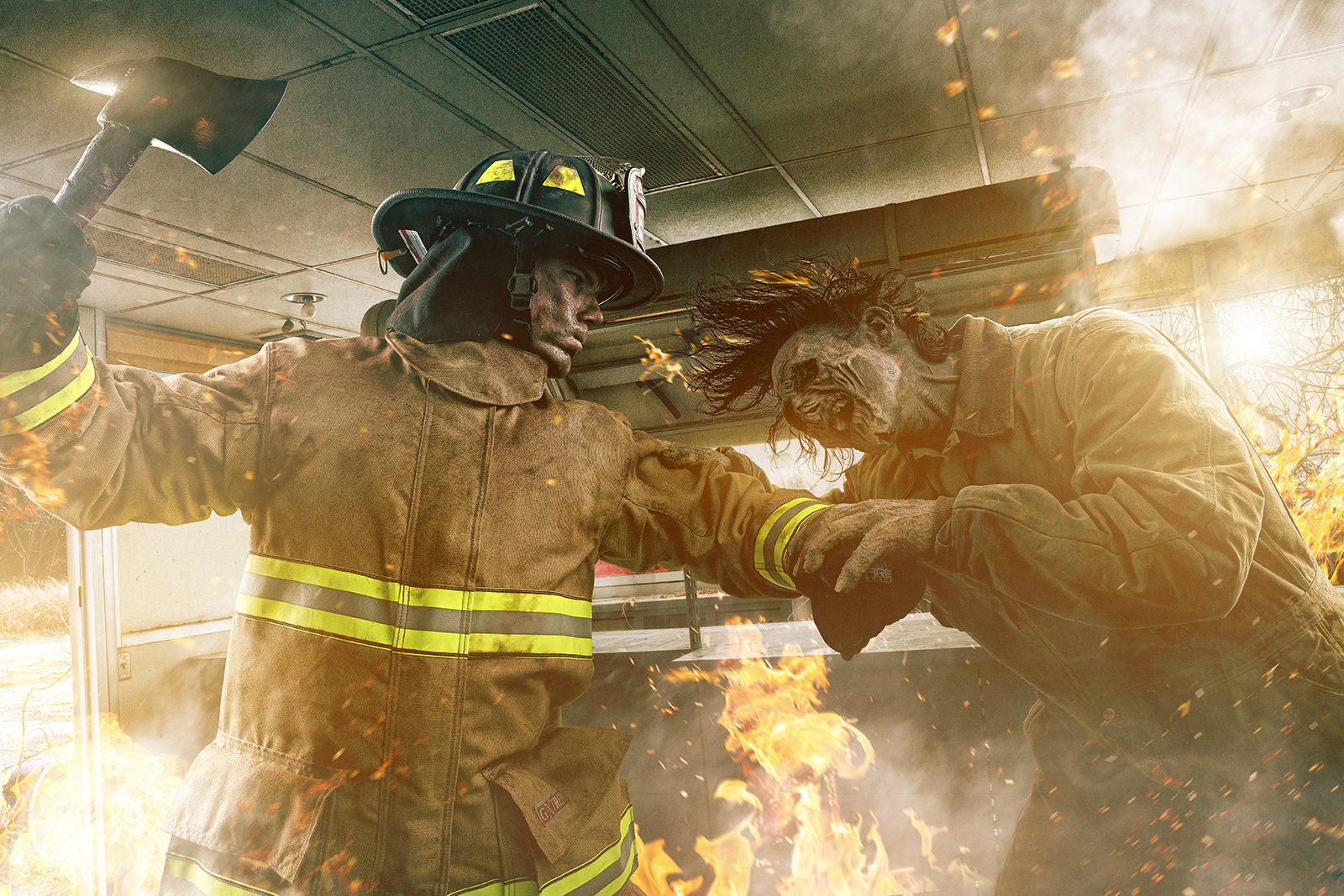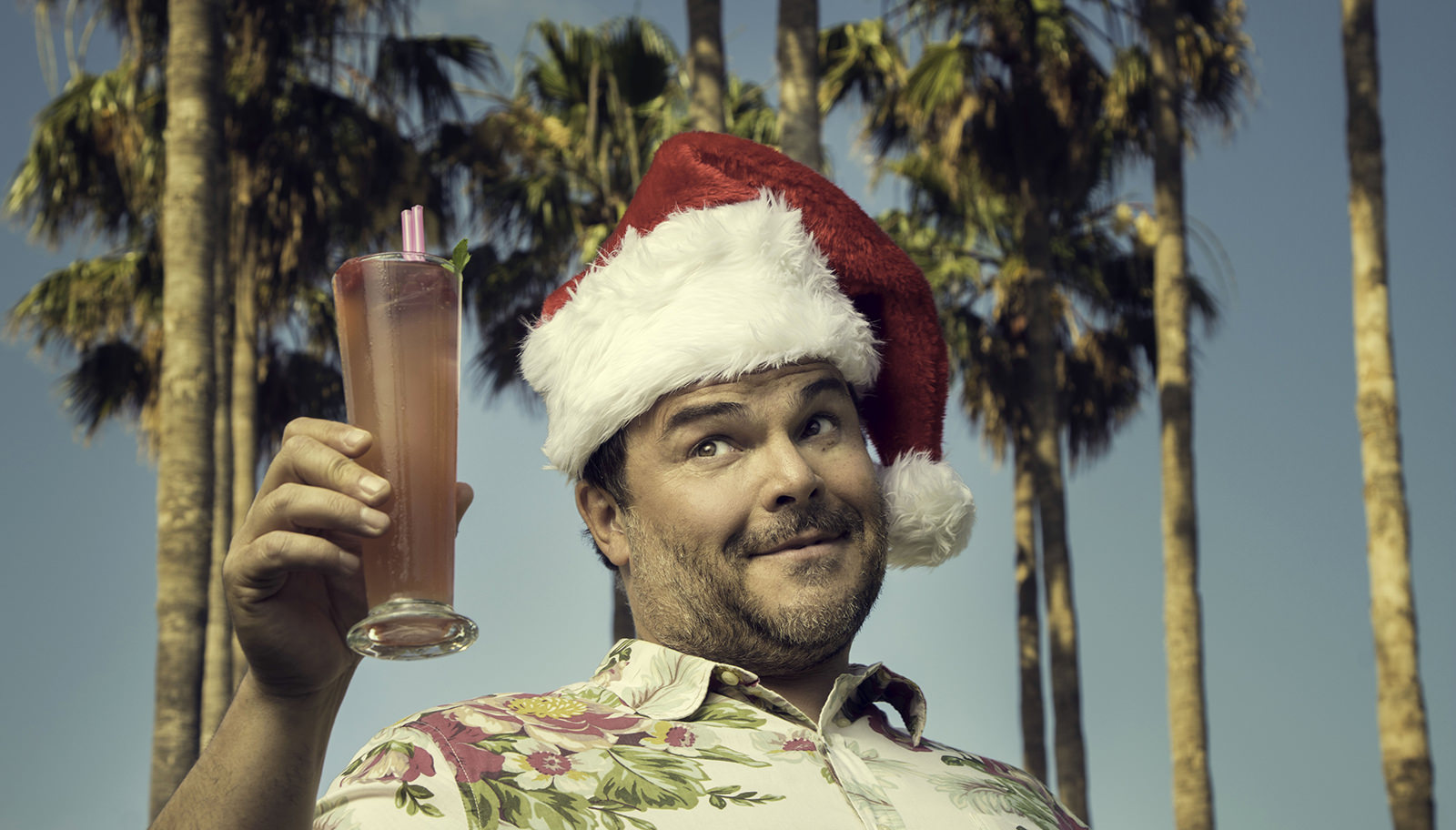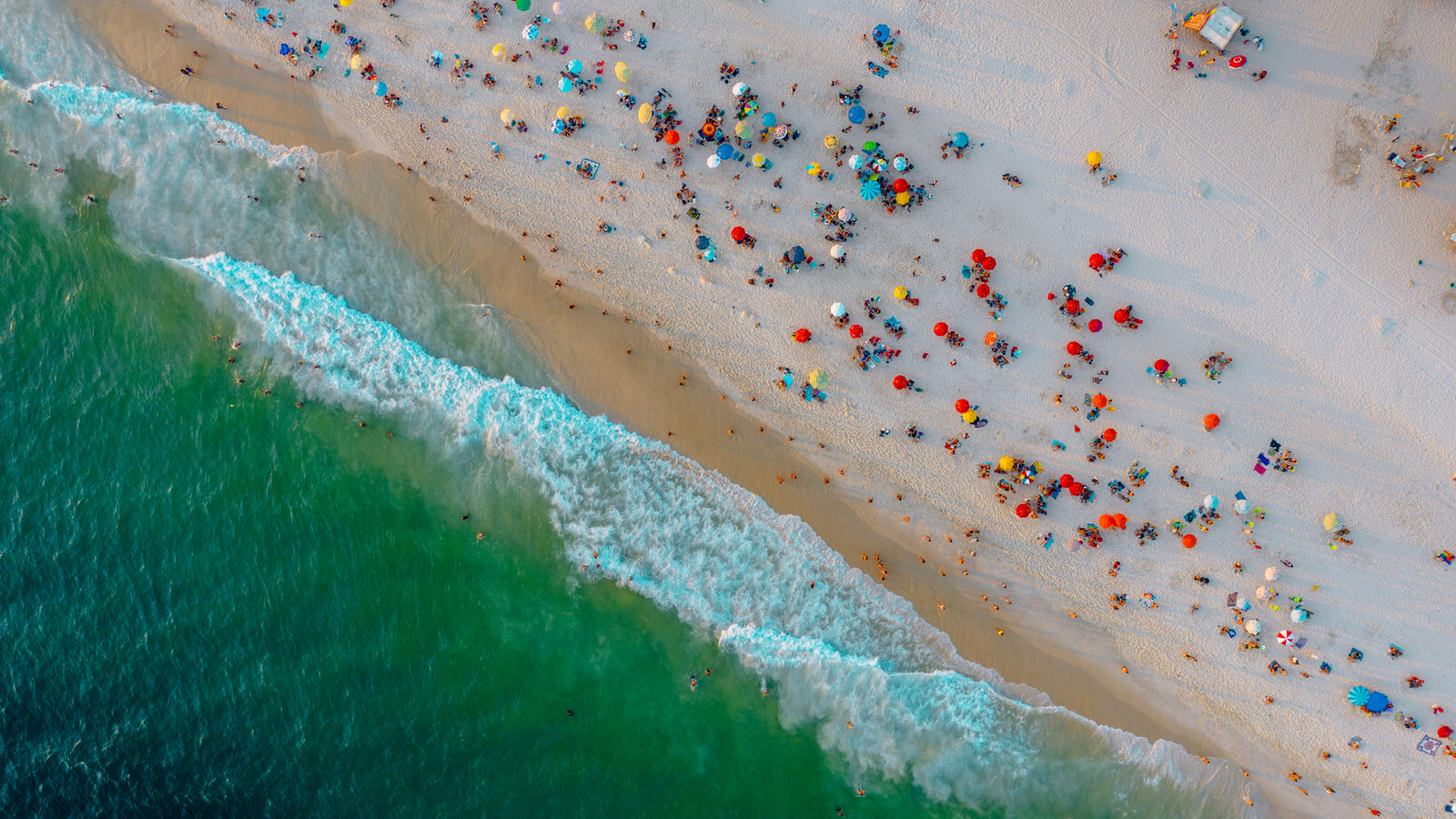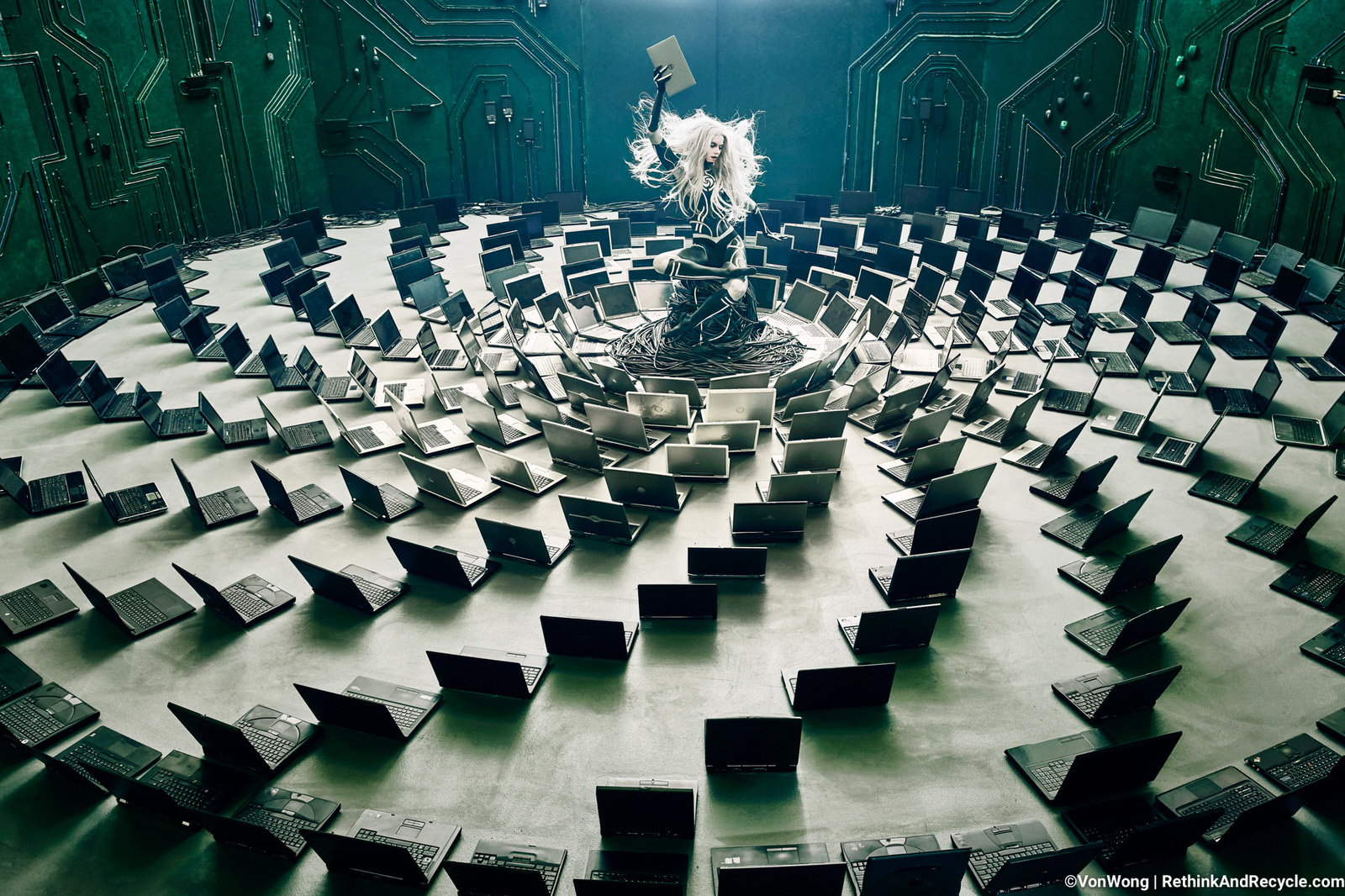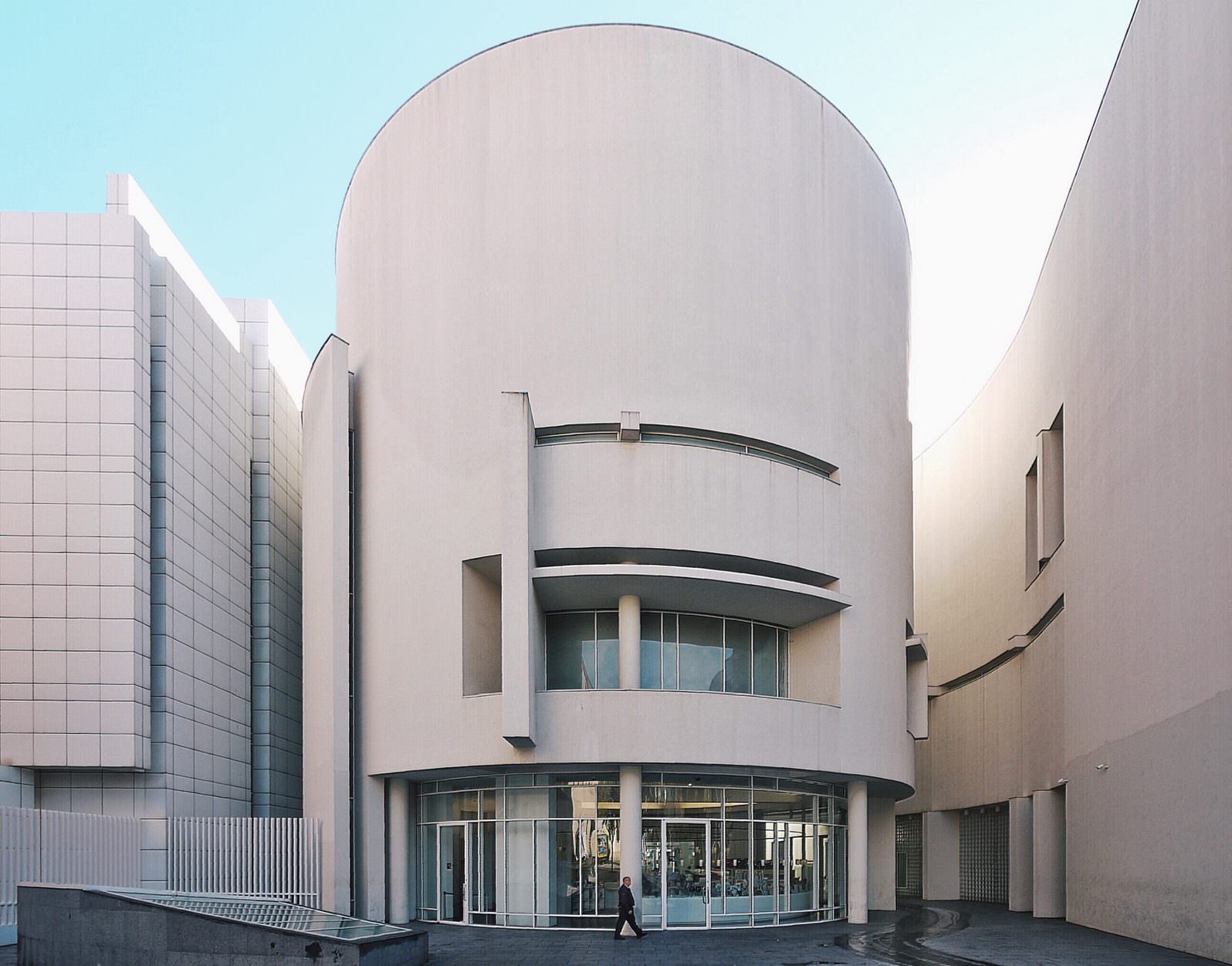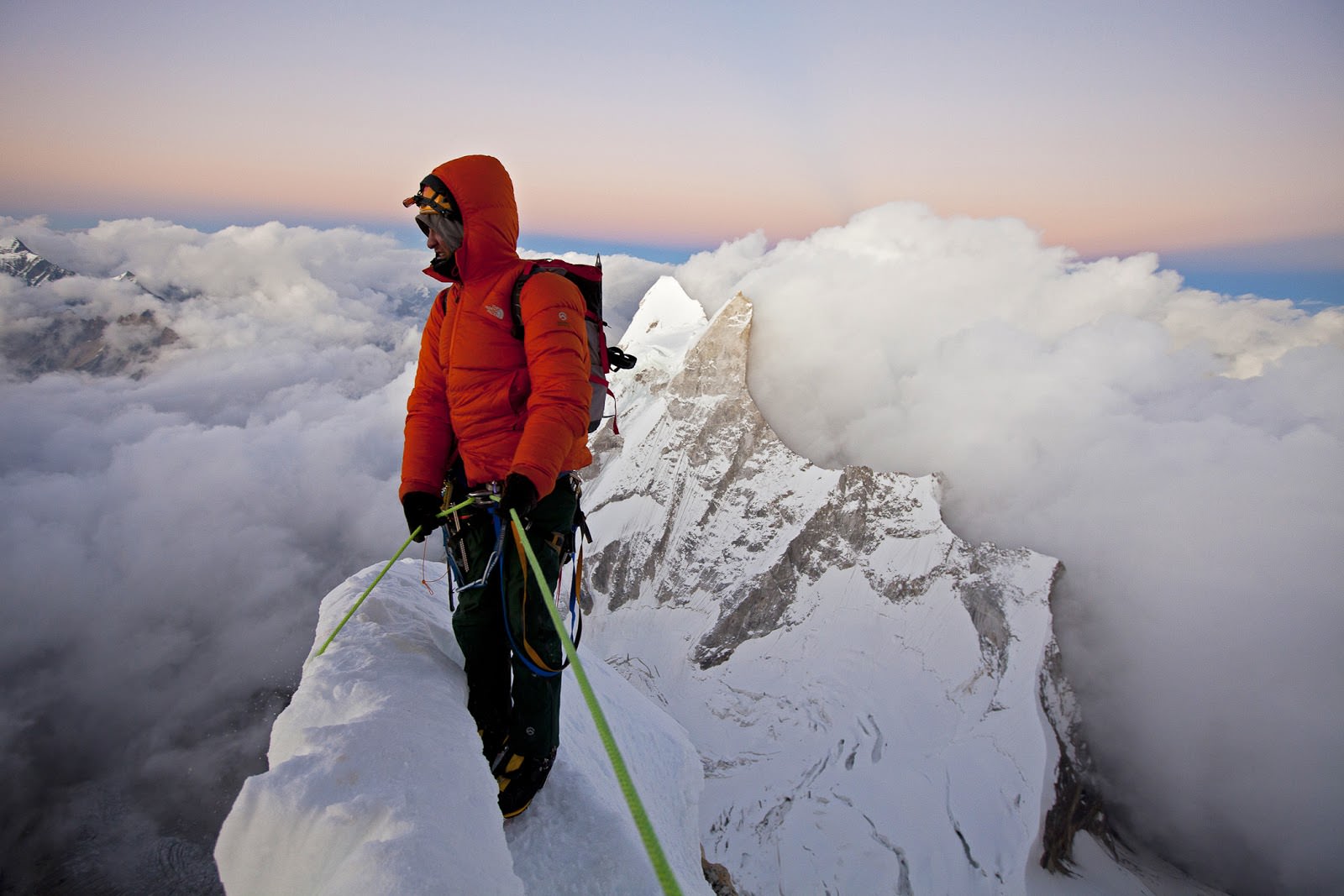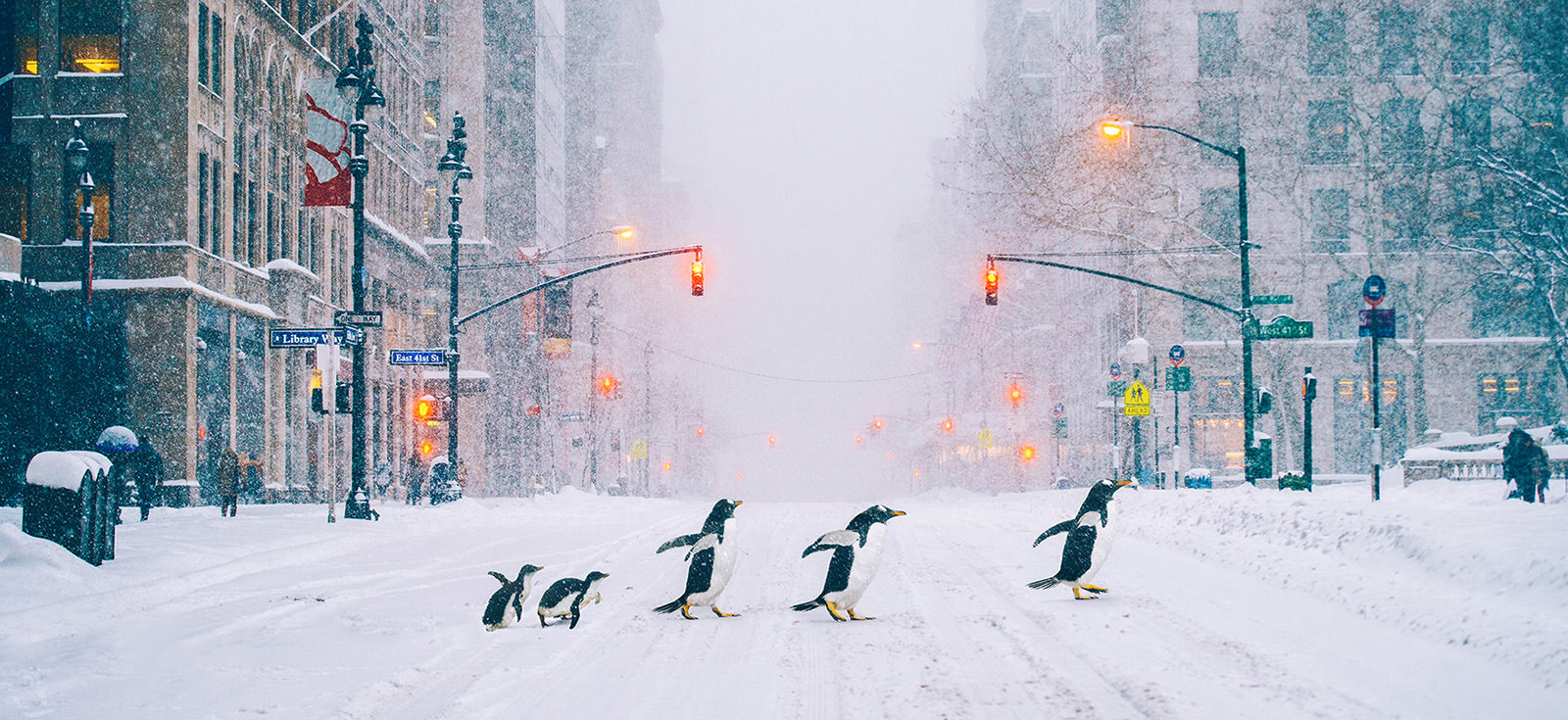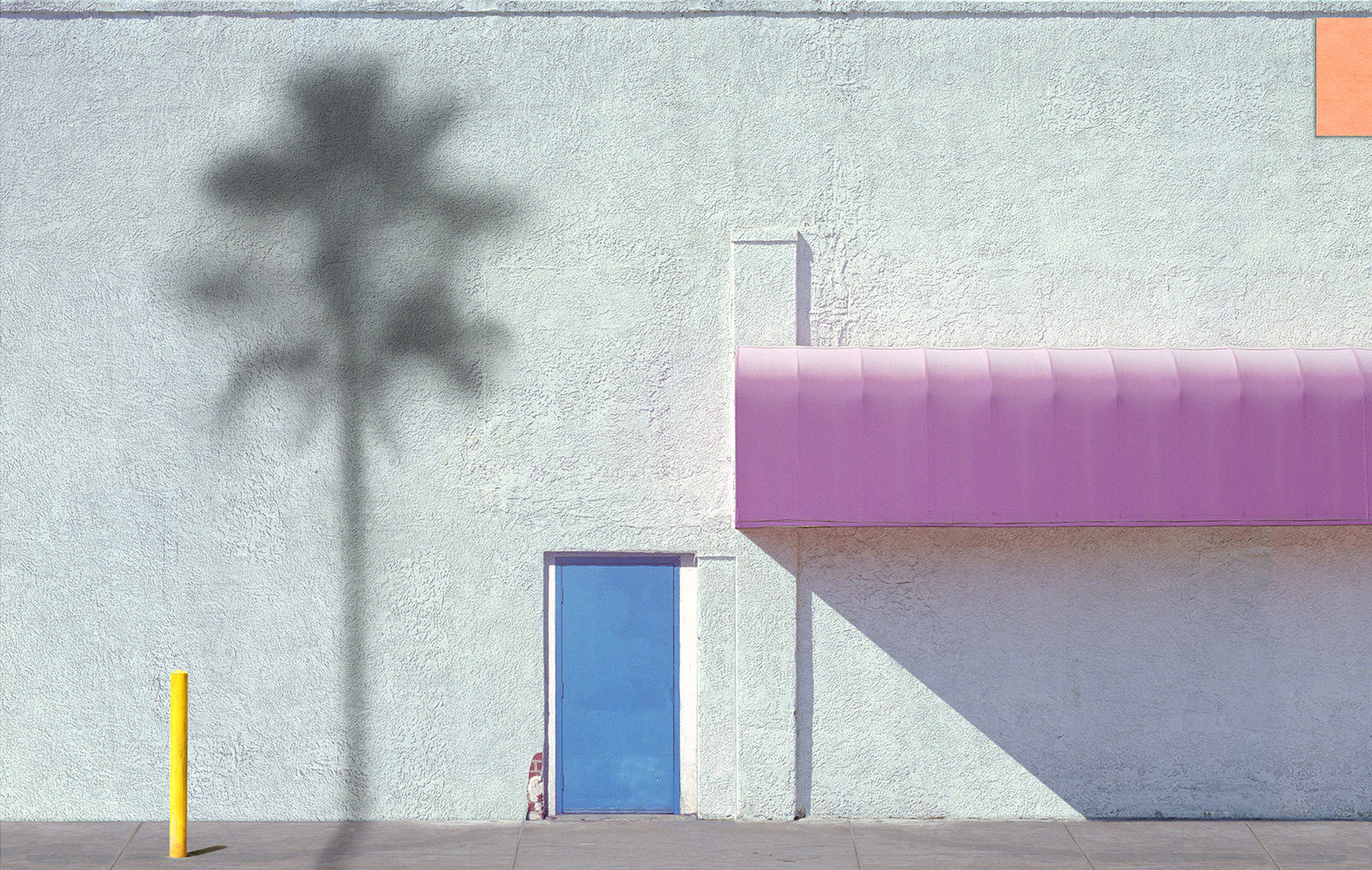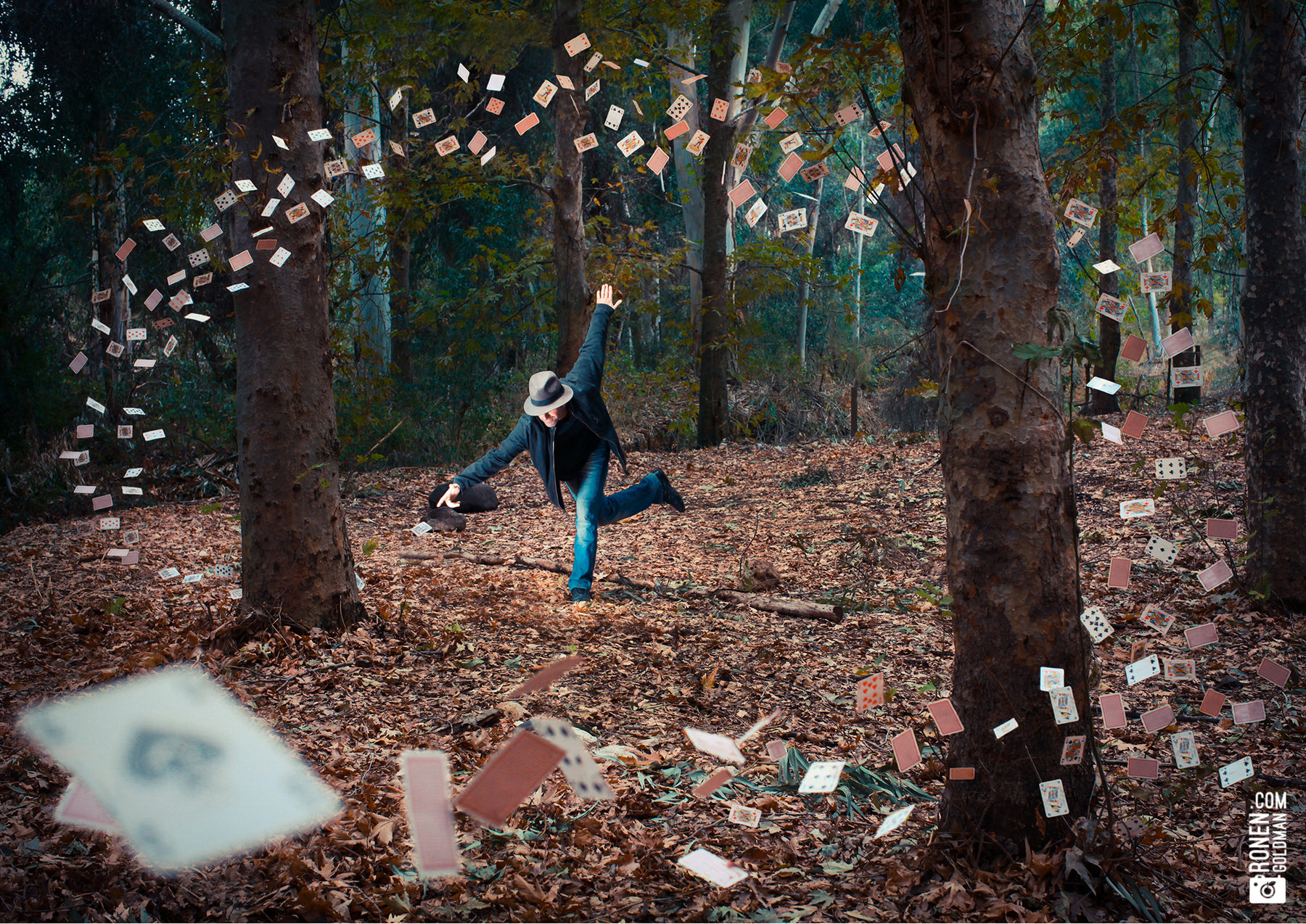
Using Magician’s Tricks to Create Surreal, Mind-Bending Photos with Ronen Goldman
Conceptual and commercial photographer Ronen Goldman has been working on his “Surrealistic Pillow Project” for 10 years now and the series features some seriously trippy, mind-bending images. The ideas come from Ronen’s dreams and touch on some personal, magical and bizarre visions, all of which are brought to life through meticulous camera work and photo editing. In our interview, we talk about how his photography is like the work of an illusionist, using magician’s tricks to fool the eye and create a twisted reality.
How did you get into photography?
RG: I actually went to school to be a screenwriter. I was supposed to be a writer and I realized that it was taking too long to write things and nobody was reading it anyway. So I went into a reserve duty in the army here, where you go like once a year to do a couple of weeks of stuff. I was in the middle of the desert with this other guy and there was nothing to do there. We were supposed to guard this outpost that was basically deserted and he had a camera and he got me hooked on the whole scene. About 12 years ago, he sent me to this forum of beginners to learn simple photography techniques and stuff. And ever since then I’ve been learning and shooting.
In the beginning, I shot on 35mm film. About a year or two ago, I started shooting medium format film. I think I got my first digital camera when digital cameras first started coming here (to Israel). I might’ve been a little late to that party. That really changed my learning curve, it was a lot quicker to learn that way.
When did you begin to consider yourself a photographer and artist?
RG: That’s a great question. I still ask myself that today because you have so many great photographers out there in the world that you wonder, am I a real photographer? Once you pick up a camera and you take your first picture, you’re a photographer but photographer in the deep sense of it. Am I a photographer? I don’t know. I mean, I think so. At first, I thought maybe it’s the first time somebody hires you to do a paid job or maybe it’s the first time somebody buys an artwork you made. I look at the great photographers and some of them never sold their art or some never got paid to do what they were doing. So I don’t know what makes you a photographer. I’m a guy that makes photographs so I guess I’m a photographer.
What artists or photographers do you most admire? And how has their work influenced your own?
RG: Henri Cartier-Bresson and Andre Kertesz. I love a guy named Romain Laurent from France. He’s amazing. I like a lot of Israeli photographers; a guy named Gabi Ben Avraham who’s a street photographer.
The whole surrealist movement inspired me from the start. At first I really liked Dali and Magritte and then with time I got introduced to, and really started liking, the work of Tanguy and de Chirico.
You shoot a lot of surrealist imagery. Your “Surrealistic Pillow Project”, particularly, is a huge success, can you tell us about that?
RG: Yeah. It’s taken a decade and I should have like a thousand pictures by now. People think I’m really great at Photoshop, but I’m not. I mean, I’m pretty good but I’m not amazing at Photoshop. I’m a better photographer because, for me, it’s important that all the elements of each photo are shot on location at the same time so that all the lighting looks believable.
If I have a scene with a person and a lot of different objects flying around him, I actually hold those objects in that room at that time with that lighting, whether it be artificial lighting or natural, because it’s important. Then I just put all the pictures together through layers in Photoshop and mask away what I don’t need. But that causes a lot of production difficulties because if I’m shooting a guy with a bunch of fish behind him, I have to go get fish and have somebody hold it and somebody to help, so each photo takes quite a while.
Beyond the logistics, I try to somehow tell a story in each image or try to encapsulate the main essence of a story in one frame and it’s pretty difficult to get all of those different story elements to work out in one moment. So the conceptualizing part also takes a while to figure out what, exactly, I’m trying to do. Sometimes the ideas start from a dream or some kind of fragment of a dream where I try to figure out what the hell that was all about when I wake up.
Dreams, in general, or abstract thoughts are very difficult to communicate and when I’m trying to get people to help me do this or get models or whoever I’m working with at the time, I have to explain verbally what I’m going to do. And it’s funny because a lot of the pictures, once they’re done, everybody’s like, “Oh, okay, now I see what you mean.” But before, I had to say to somebody, “I need you to sleep in a bed with a bunch of lizards.” That was weird; it sounds strange and not every person wants to do that because there’s some risk involved and most people think, “Am I going to look stupid? Is it going to be ridiculous? What the hell are you doing?” So I tend to work with people who trust me or that have seen my work and know that it’s probably going to be cool.
Each photo takes weeks or months and that’s why it’s taken me a decade to make like 30 pictures. And like with any art, not all of them are amazing. Some are not that great, but every so often there is a great one so it makes it all worthwhile for me.
Do you have any particular habits that are part of your creative process?
RG: When the images are based on dreams, I realize that when I wake up I have like 10 seconds to write down whatever the hell that was all about and try to pinpoint what was interesting to me and distill one moment or image and atmosphere that conveys that. Then after 10 seconds, it feels like the normal brain turns back on and then the dream is gone. So part of the process is writing that down and then sitting down and trying to figure out what I want to create out of that.
Nowadays, I have two kids and I don’t sleep that much so the whole dream situation has deteriorated. It’s very hard to dream when you’re not sleeping. The project really took a different direction. Now, I’m more thinking about conceptualizing things, not through dreams but through imagining it or seeing things in the world and creating stuff from that, like being inspired from things I see or thoughts or situations.
What do you do when you hit a wall during your creative process?
RG: I wish I knew the answer! My wall, the way it manifests with me, is not that I don’t have ideas but that I get ideas and then I convince myself that they’re just not good enough. That’s a mechanism that protects me from being disappointed and that leads, sometimes, to very long periods of time where I don’t create anything because I’m thinking, “Oh, it’s not good enough.”
It’s not like the ideas dry up. The ideas are there, but the will to make them happen somehow has resistance. So I just try to remind myself that you just gotta do it. You’ve got to create something and if it really is terrible then you just don’t show anybody. But 99 percent of the time, it’s worthwhile. It might not be a masterpiece but it’s worth doing. I need to remind myself that.
A lot of times, you hear, “Just show your work, you have to show your work.” You, as the artist, may not think it’s great, but then when you show it to your audience you might get great feedback.
RG: That’s true in a sense. You don’t want to be totally bunkered down and not showing anything, but I think one of the most important things a photographer or any artist should do is edit their own work and know if something really isn’t that great, you don’t have to share it. The other side of that is, of course, you should share some of your stuff. I may do 10 works and think two of them are masterpieces. Maybe I’ve managed to do something I’ve never done before, a technique or a thought or really manage to capture what I was going for. But, then somebody says, “Yeah, that’s great but this other one is better,” and it’s one I thought was not the best.
Everybody has their own opinion and, for sure, once you create the art it’s out of your hands. People have been interpreting stuff I’ve done in such wild ways that I’ve never imagined. So you can’t really know how it will be received or how people will get your work, but I wouldn’t advocate put everything out. I’m my harshest critic and, like I said before, sometimes that’s not great because it really stops me from doing stuff. On the other hand, I’m honest with myself and I know if something just didn’t work out as well as it could have then fine, I’ll try again.
Do you have any photos that you can think of that either you put out and afterwards thought you shouldn’t have, or ones you weren’t sure of and then were pleasantly surprised with the response?
RG: Well, yeah. I had one early on photo that I made, it was a picture of me sleeping in a bed with a bunch of cameras over my head, it was one of my first images. I like that one but it’s not my most profound or most difficult. For some reason, a lot of people came back and said, “Wow, that one is great.” And that’s great. I think I have better stuff, but everybody’s entitled to their thing.
Also, there’s one image that I’m most known for, which is the guy throwing cards in a spiral (featured at top of article), called “The Magician.” I love that picture but I have stuff that is a lot closer to my heart and that has a lot deeper meaning than that one. But, that’s the one people like most. I guess people are right.
I don’t have anything I regret putting out because I really aspire to only put out my best work. Of course, some of it is not my best, some of it is good. And that’s fine, I don’t regret that.
What’s your favorite photo and why?
RG: I have one photo of two people with fishbowl heads feeding each other and I love that one because, technically, it came out exactly as I wanted and also, it has a lot of meaning to me. It ties into a lot of stuff from my personal life with me and my wife and what we’ve been through and how we see our relationship. It has a lot of meaning and it just looks cool.
What advice would you offer beginner photographers?
RG: To not overthink stuff. Just create as much as you can. There are so many photographers today. Everybody’s a photographer. Everybody has a phone in their pocket. Everybody’s taking pictures. But every person has their own outlook on the world, so instead of shying away from what makes you different or weird or what interests you, you should just embrace it.
Some people try to emulate what other people are doing or look for trends and figure out what people want to see; there’s enough of that. People want to see the way you see things. You’re the only person who can do what you can do. So I would definitely say to beginner photographers, “Learn the craft, the technical stuff, just so you have more tools that allow you to do more things. But don’t worry about it too much. Just create. The more you create, the more you figure out what interests you and what the direction you want to go in. And if it interests you, most likely it will interest somebody else too.”
I learned myself because of things like PHLEARN and plenty of other websites and places that give you tools. Some people do better if they have to go to a building and learn it there. And some people do better sitting at home and watching a screen. There’s no big difference.
Do you have a favorite quote that really fires you up?
A quote I like is by Austin Kleon, writer of “Steal Like an Artist.” It’s: “You’re ready. Start making stuff.”
What book would you recommend any creative person read?
Gregory Heisler. His book called “50 Portraits” is unbelievable and very interesting and I would definitely recommend it.
I think that you do this in a lot of your photos, but if you were to capture your essence in one of your photos what would be happening in it?
RG: Yeah, I think the whole series is doing that. There’s one picture of the guy with the apples and the umbrella. I feel like I’m just trying to live in a world where there’s a lot of stuff coming at me at once and just trying to stay calm and keep doing what I need to do.
A lot of people, I’m sure, have been through some difficult times in their lives; so have I and it feels like art helps me to convey that feeling of there’s a lot going on but you can handle it. You can make it through.
What are you working on now and what can we expect from you coming up?
RG: In the last two years I started shooting with medium format film and my end goal is to get really good at that so that I can continue the project using film. I’d basically shoot the photos on film and then scan them and then combine them in Photoshop. The same workflow but make it a lot more difficult!
When medium format film works out, it looks amazing and no Photoshop in the world can emulate that special look that it has when you print it and enlarge it. The series, “The Surrealistic Pillow Project” has been shown in all kinds of exhibitions around the world and galleries. It’s now in Jerusalem. It looks great because I shoot with good digital cameras, but it can look even better if the source is film.
Aside from the film, I’m also doing a lot of cinemagraphs lately. I’m trying to reach a place where I’m doing cinemagraphs in the same way I do “The Surrealistic Pillow Project,” where there’s some kind of main idea happening, a story that has some kind of tension in it or a dramatic moment, but in cinemagraph form. But that’s still in development. I’m still learning how far I can take it, seeing what the boundaries of it are.
“The Surrealistic Pillow Project,” which is a personal project, basically launched my commercial career. It’s what people, ad brands and companies hire me to do for them. They say, “Oh, that’s cool. We want that essence in our work,” and I get commissioned to do stuff of that nature. It’s great and I’m also professionally aspiring to do more of that, more commercial work in my style. That’s the direction I’m going in, to create highly conceptualized images for brands and companies through cinemagraphs or straight images.
At one point I started doing 360 VR stuff. It feels like the world is not there yet though, and the amount of work it takes to make one of those things is insane. So I put that on the back burner for now; I’m mostly doing the images and cinemagraphs commercially.
And I’m going to keep doing “The Surreal Pillow Project” because I love it and it really helps me. It can be shown nowhere and I’ll still be very happy. I do it just to better my craft and make images I want to see.
You can check out more of Ronen’s work, from his cinemagraphs and 360 VR to the complete “Surrealistic Pillow Project,” on his website or follow his Instagram and Facebook pages.
